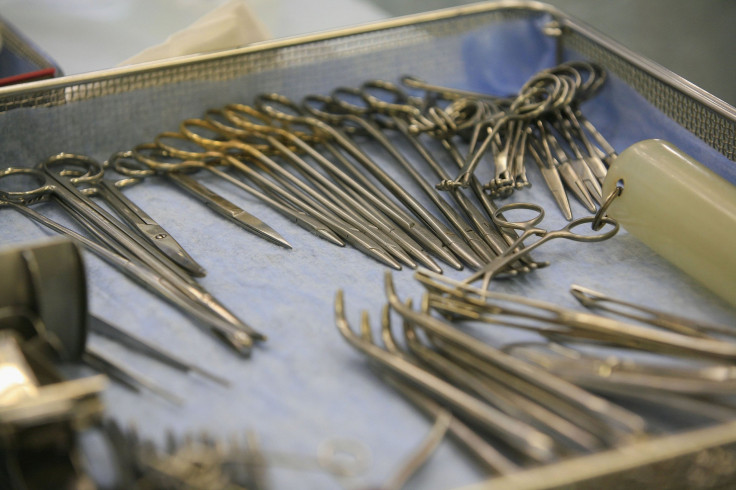Surgical Sponges Left Inside Woman's Body For 6 Years Trigger Bloating

A woman complained of persistent bloating and the reason for her suffering shocked her. The 42-year-old had two surgical sponges left in her body for at least six years.
For three years the woman suffered from bloating and also checked into a primary care clinic in Japan for treatment, a new report in the New England Journal of Medicine published Wednesday revealed.
A CT scan revealed two "hyperdense, stringy" surgical sponges were left inside of her abdomen during her previous cesarean sections, CNN reported. The woman got two C-sections, one six years ago and the other nine years ago. It was unclear during which C-section the sponges were left behind.
"Computed tomography of the abdomen showed well-defined pelvic masses that contained hyperdense, stringy structures," the team wrote in the report.
Laparotomy conducted on the woman, who was not identified, revealed the sponges had attached themselves to two separate structures in her abdomen. The masses were cut open and doctors found the sponges were encased in “thick, fibrous walls.”
"When the masses were divided in half, gauze sponges encapsulated by thick, fibrous walls (Panel C) and radiopaque barium sulfate strands were observed. A diagnosis of gossypiboma was made. A gossypiboma refers to a foreign object, such as a surgical sponge, left behind in a body cavity after an operation," the report said.
According to Dr. Takeshi Kondo, a general medicine physician at Chiba University Hospital and lead author of the report, the doctor who performed the patient’s surgeries is not taking responsibility.
The report said after the sponges were removed, the woman made a full recovery.
"The patient recovered uneventfully from the surgery and had complete resolution of the lower abdominal bloating; she was discharged from the hospital 5 days after the surgery," the report said.
Takeshi Kondo from Chiba University Hospital and lead author of the case study told CNN there are many Japanese hospitals and clinics that perform imaging of the abdomen before closing a patient up, to prevent such incidents.
"Although she met the surgeon and told him (about) the retained foreign bodies, the surgeon did not admit his mistake on the grounds of lack of clear proof," Kondo said.
According to a study conducted by New England Journal of Medicine in 2003, approximately 70 percent of items left inside patients are sponges, while the rest include surgical instruments like clamps or retractors.
A 2017 report from the Organisation for Economic Co-operation and Development (OECD), found surgeons in Canada were more likely to leave behind sponges and knives in patients compared to other countries.
© Copyright IBTimes 2024. All rights reserved.





















